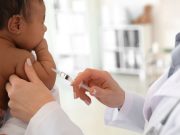Tag: Autism
Maternal Health in Pregnancy Not Tied to Risk for Autism in Offspring
Family-based analyses provided strong evidence for familial confounding in observed associations
Maternal Health in Pregnancy Tied to Risk for Autism in Offspring
Maternal diagnoses significantly associated with autism after accounting for various factors
Considerable Overlap Seen for Children With Medical Complexity, Autism
Expenditures significantly higher when medical complexity and autism overlap versus either one alone
Multilingualism May Aid Children With Autism Spectrum Disorder
Benefits include executive function and lessened autism spectrum disorder-related symptoms
Prevalence of Dementia Diagnoses Increased in Individuals With Autism Diagnosis
Increase in odds of dementia diagnosis seen with age among those with ASD only and ASD plus intellectual disabilities
Global Prevalence of Autism Spectrum Disorder Is High
Estimated 61.8 million individuals were on the autism spectrum globally in 2021, with prevalence of 788.3 per 100,000 people
Trump Says RFK Jr. Free to Revisit Discredited Autism/Vaccine Link
2011 to 2022 Saw Increase in Autism Diagnoses Among Children, Adults
Greatest relative increase in diagnosis rate occurred among 26- to 34-year-olds; greater increases seen for females versus males
Prenatal Cannabis Use Not Linked to Autism Spectrum Disorder
Second study shows no association for prenatal cannabis use with child developmental delays up to age 5.5 years
Prenatal Exposure to Pandemic Milieu, Maternal SARS-CoV-2 Does Not Increase Autism Risk
No increased rates of positive M-CHAT-R screening seen for offspring














